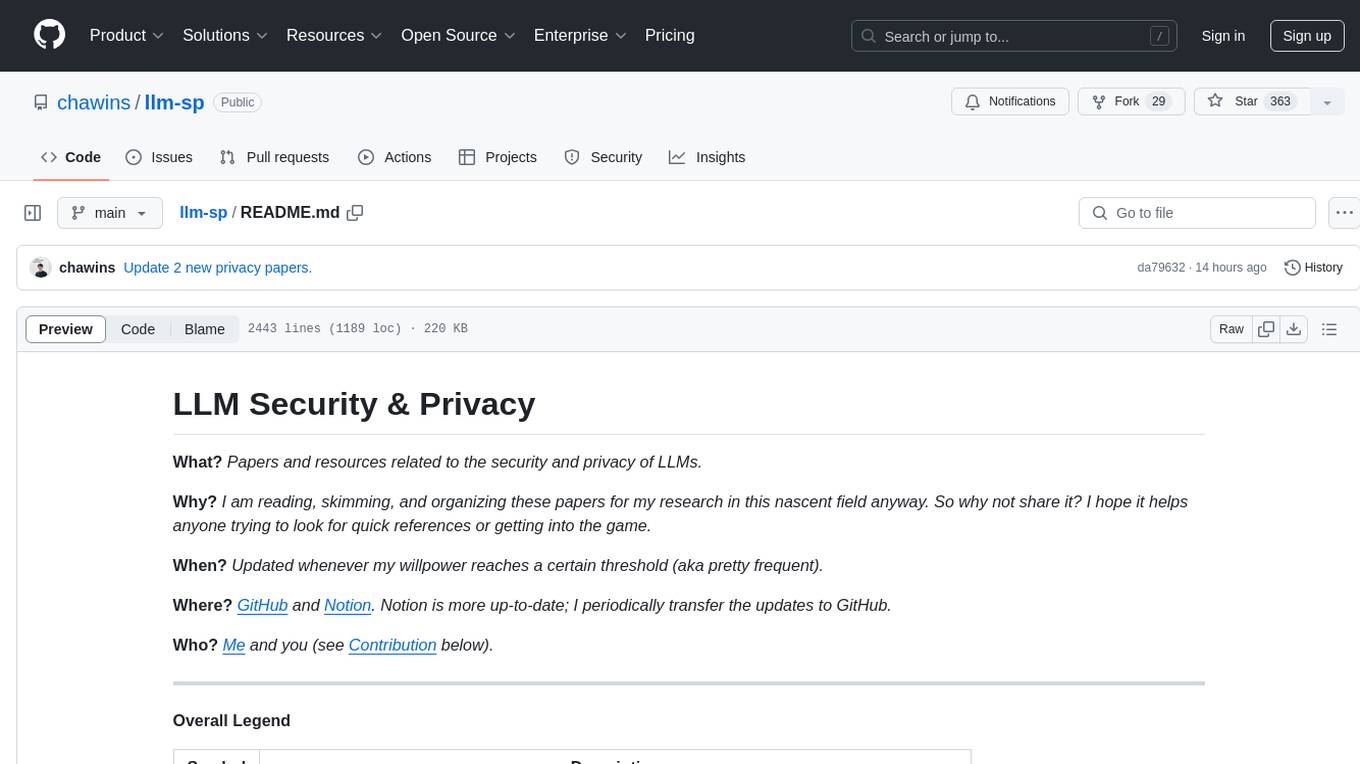
gguf-tools
GGUF implementation in C as a library and a tools CLI program
Stars: 249
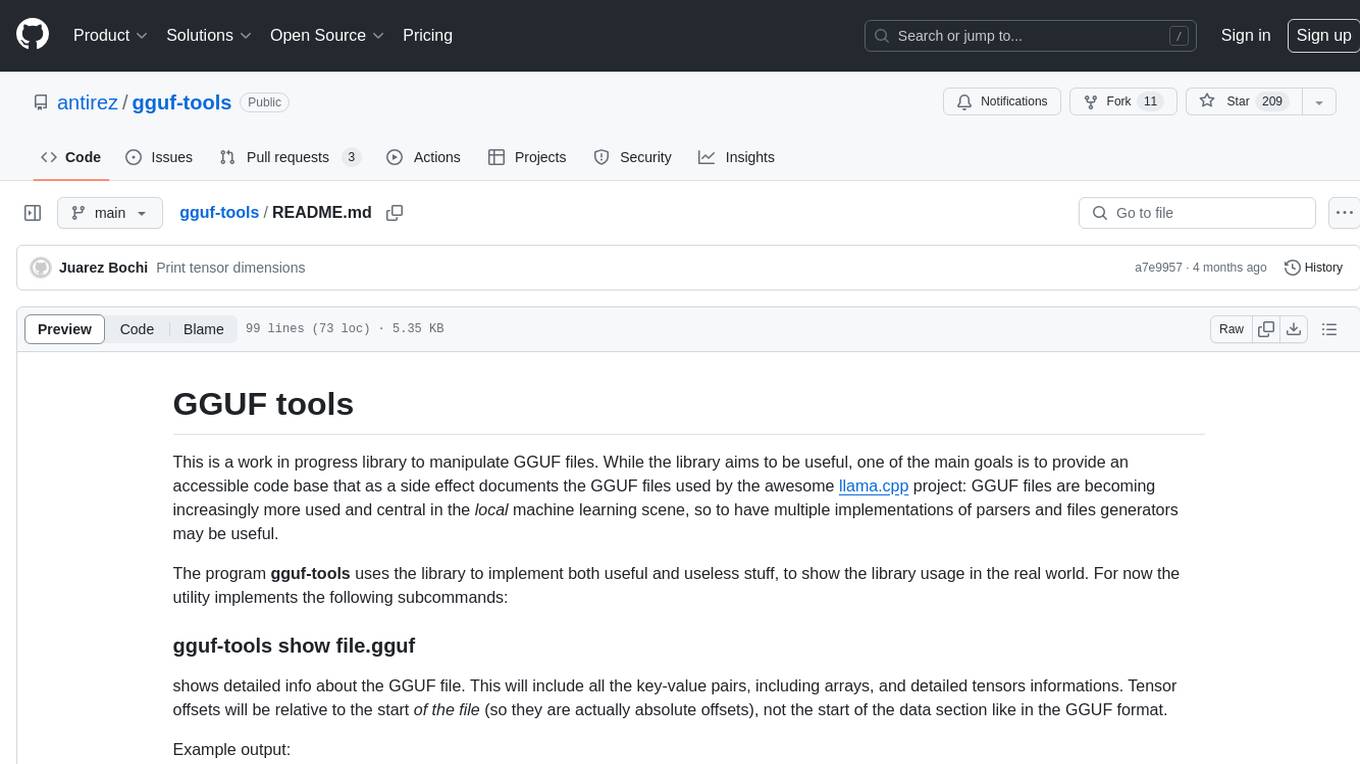
GGUF tools is a library designed to manipulate GGUF files commonly used in machine learning projects. The main goal of this library is to provide accessible code that documents GGUF files for the llama.cpp project. The utility implements subcommands to show detailed info about GGUF files, compare two LLMs, inspect tensor weights, and extract models from Mixtral 7B MoE. The library is under active development with well-commented code and a simple API. However, it has limitations in handling quantization formats.
README:
This is a work in progress library to manipulate GGUF files. While the library aims to be useful, one of the main goals is to provide an accessible code base that as a side effect documents the GGUF files used by the awesome llama.cpp project: GGUF files are becoming increasingly more used and central in the local machine learning scene, so to have multiple implementations of parsers and files generators may be useful.
The program gguf-tools uses the library to implement both useful and useless stuff, to show the library usage in the real world. For now the utility implements the following subcommands:
shows detailed info about the GGUF file. This will include all the key-value pairs, including arrays, and detailed tensors informations. Tensor offsets will be relative to the start of the file (so they are actually absolute offsets), not the start of the data section like in the GGUF format.
Example output:
./gguf-tools show models/phi-2.Q8_0.gguf | head -20 :main*: ??
models/phi-2.Q8_0.gguf (ver 3): 20 key-value pairs, 325 tensors
general.architecture: [string] phi2
general.name: [string] Phi2
phi2.context_length: [uint32] 2048
phi2.embedding_length: [uint32] 2560
phi2.feed_forward_length: [uint32] 10240
phi2.block_count: [uint32] 32
phi2.attention.head_count: [uint32] 32
phi2.attention.head_count_kv: [uint32] 32
phi2.attention.layer_norm_epsilon: [float32] 0.000010
phi2.rope.dimension_count: [uint32] 32
general.file_type: [uint32] 7
tokenizer.ggml.add_bos_token: [bool] false
tokenizer.ggml.model: [string] gpt2
tokenizer.ggml.tokens: [array] [!, ", #, $, %, &, ', (, ), *, +, ,, -, ., /, 0, 1, 2, 3, 4, 5, 6, 7, 8, 9, :, ;, <, =, >, ... 51170 more items of 51200]
... many more key-value pairs ...
q8_0 tensor token_embd.weight @1806176, 131072000 weights, dims [2560,51200], 139264000 bytes
f32 tensor blk.0.attn_norm.bias @141070176, 2560 weights, dims [2560], 10240 bytes
f32 tensor blk.0.attn_norm.weight @141080416, 2560 weights, dims [2560], 10240 bytes
f32 tensor blk.0.attn_qkv.bias @141090656, 7680 weights, dims [7680], 30720 bytes
q8_0 tensor blk.0.attn_qkv.weight @141121376, 19660800 weights, dims [2560,7680], 20889600 bytes
f32 tensor blk.0.attn_output.bias @162010976, 2560 weights, dims [2560], 10240 bytes
q8_0 tensor blk.0.attn_output.weight @162021216, 6553600 weights, dims [2560,2560], 6963200 bytes
f32 tensor blk.0.ffn_up.bias @168984416, 10240 weights, dims [10240], 40960 bytes
... many more tensors ...
This tool is useful to understand if two LLMs (or other models distributed as GGUF files) are related, for instance if one is the finetune of another, or if both are fine-tuned from the same parent model.
For each matching tensor (same name and parameters count), the command computes the average weights difference (in percentage, so that a random distribution in the interval -N, +N would be on average 100% different than another random distribution in the same interval). This is useful to see if a model is a finetune of another model, how much it was finetuned, which layers were frozen while finetuning and so forth. Note that because of quantization, even tensors that are functionally equivalent may have some small average difference.
Example output:
./gguf-tools compare mistral-7b-instruct-v0.2.Q8_0.gguf \
solar-10.7b-instruct-v1.0-uncensored.Q8_0.gguf
[token_embd.weight]: avg weights difference: 44.539944%
[blk.0.attn_q.weight]: avg weights difference: 48.717736%
[blk.0.attn_k.weight]: avg weights difference: 56.201885%
[blk.0.attn_v.weight]: avg weights difference: 47.087249%
[blk.0.attn_output.weight]: avg weights difference: 47.663048%
[blk.0.ffn_gate.weight]: avg weights difference: 37.508761%
[blk.0.ffn_up.weight]: avg weights difference: 39.061584%
[blk.0.ffn_down.weight]: avg weights difference: 39.632648%
...
Show all (if count is not specified, otherwise only the first count) weights values of the specified tensor. This is useful for low level stuff, like checking if quantization is working as expected, see the introduced error, model fingerprinting and so forth.
Extracts a 7B model out.gguf from Mixtral 7B MoE using the specified MoE ID for each layer (there are 32 digits in the sequence 652...).
Note that split-mixtral is quite useless as models obtained in this way will not perform any useful work. This is just an experiment and a non trivial task to show how to use the library. Likely it will be removed soon, once I have more interesting and useful examples to show, like models merging.
For now the only documentation is the implementation itself: see the gguf-tools.c for usage information. This may change later, but for now the library is under active development.
The code is well commented, and the API so far is extremely simple to understand and use.
Many quantization formats are missing.
- Official GGUF specification, where the file layout and meta-data is described.
- Quantization formats used in quantized GGUF models.
For Tasks:
Click tags to check more tools for each tasksFor Jobs:
Alternative AI tools for gguf-tools
Similar Open Source Tools

gguf-tools
GGUF tools is a library designed to manipulate GGUF files commonly used in machine learning projects. The main goal of this library is to provide accessible code that documents GGUF files for the llama.cpp project. The utility implements subcommands to show detailed info about GGUF files, compare two LLMs, inspect tensor weights, and extract models from Mixtral 7B MoE. The library is under active development with well-commented code and a simple API. However, it has limitations in handling quantization formats.
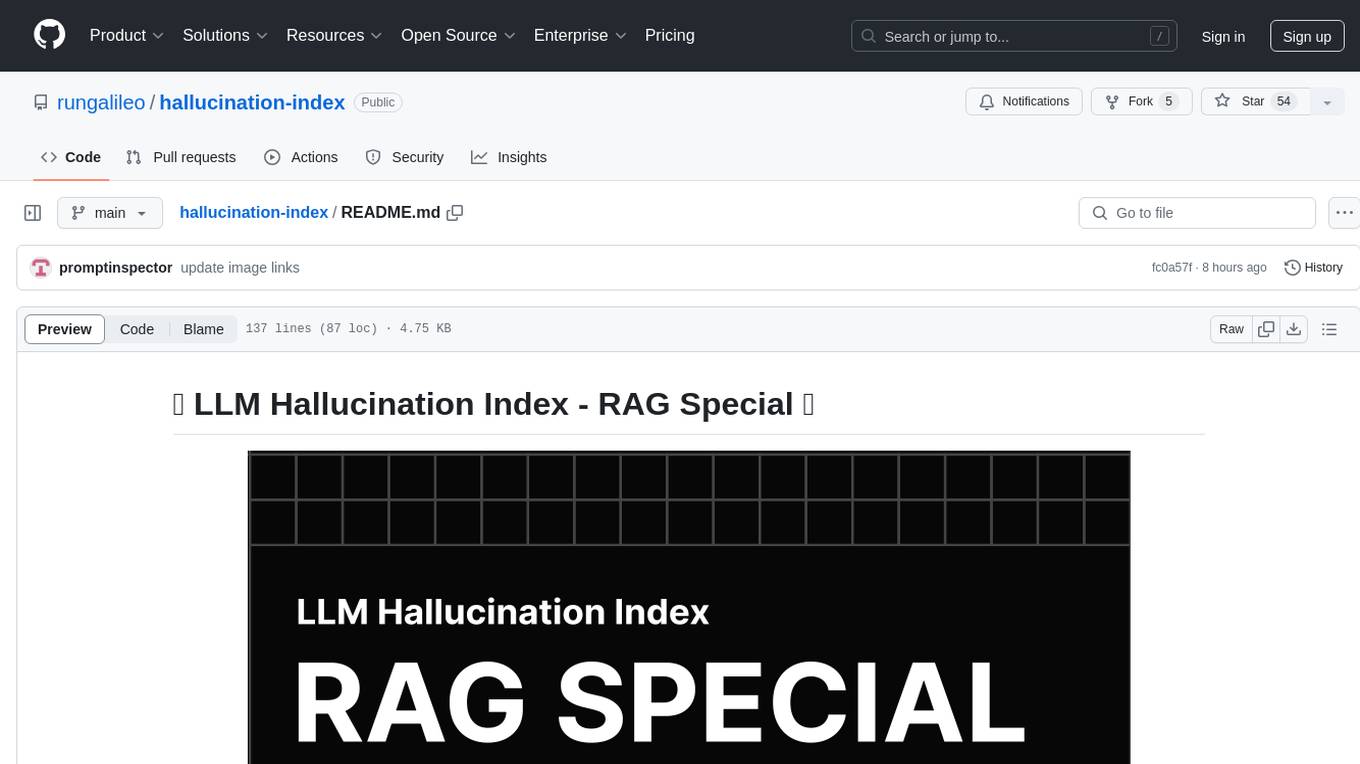
hallucination-index
LLM Hallucination Index - RAG Special is a comprehensive evaluation of large language models (LLMs) focusing on context length and open vs. closed-source attributes. The index explores the impact of context length on model performance and tests the assumption that closed-source LLMs outperform open-source ones. It also investigates the effectiveness of prompting techniques like Chain-of-Note across different context lengths. The evaluation includes 22 models from various brands, analyzing major trends and declaring overall winners based on short, medium, and long context insights. Methodologies involve rigorous testing with different context lengths and prompting techniques to assess models' abilities in handling extensive texts and detecting hallucinations.
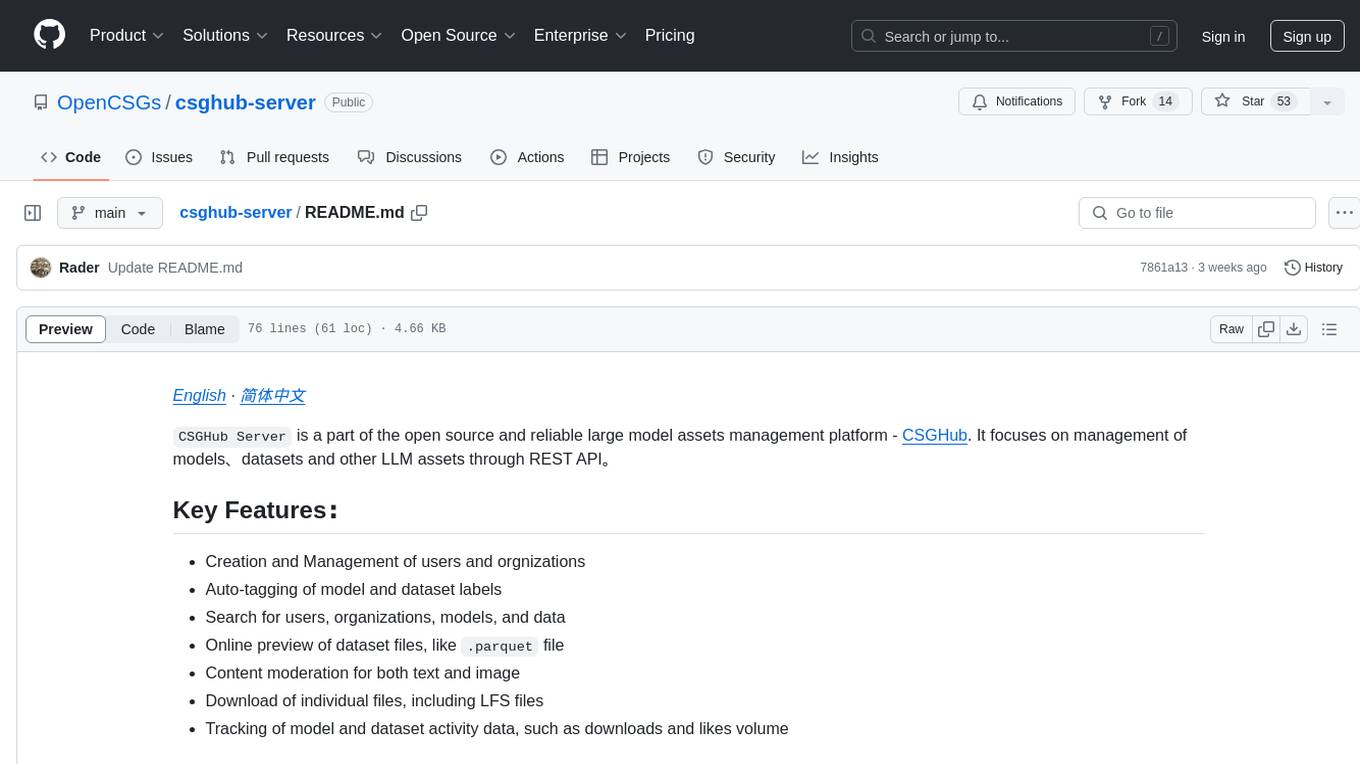
csghub-server
CSGHub Server is a part of the open source and reliable large model assets management platform - CSGHub. It focuses on management of models, datasets, and other LLM assets through REST API. Key features include creation and management of users and organizations, auto-tagging of model and dataset labels, search functionality, online preview of dataset files, content moderation for text and image, download of individual files, tracking of model and dataset activity data. The tool is extensible and customizable, supporting different git servers, flexible LFS storage system configuration, and content moderation options. The roadmap includes support for more Git servers, Git LFS, dataset online viewer, model/dataset auto-tag, S3 protocol support, model format conversion, and model one-click deploy. The project is licensed under Apache 2.0 and welcomes contributions.
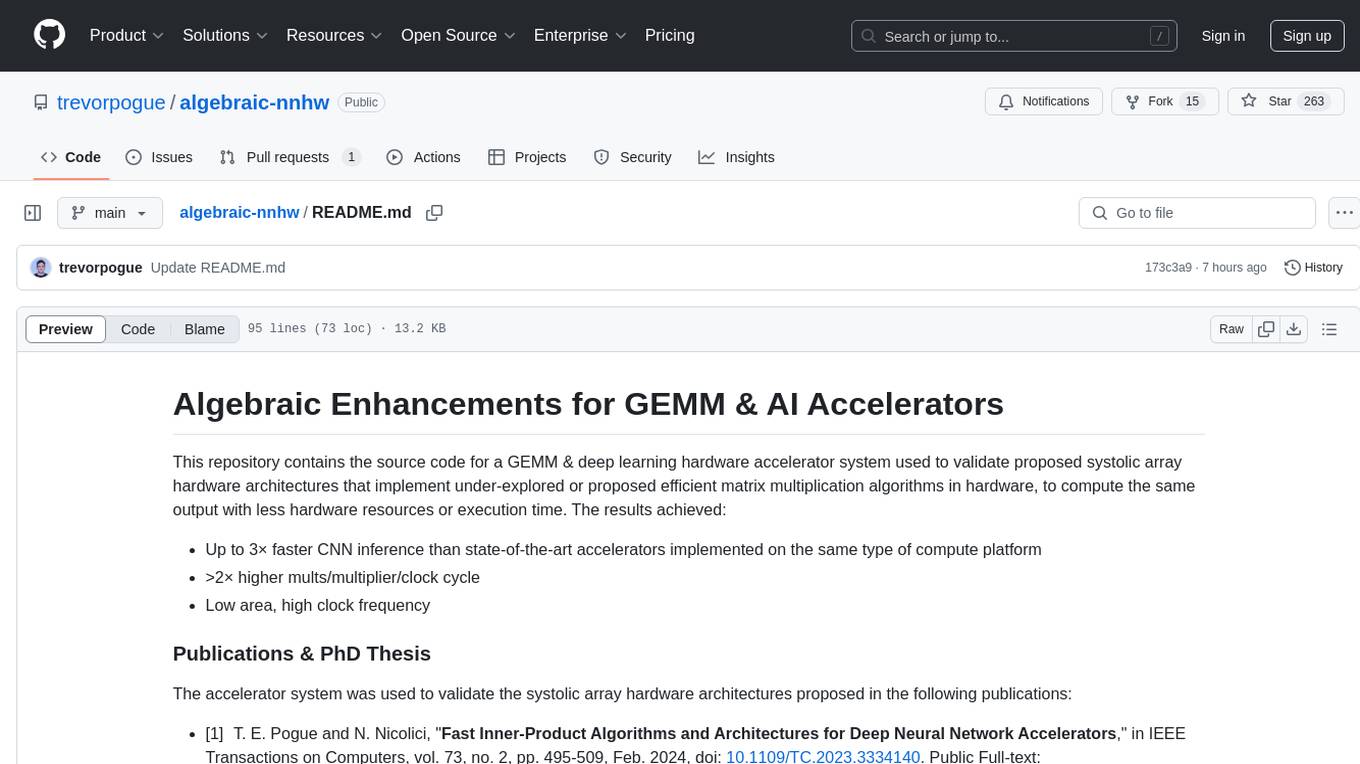
algebraic-nnhw
This repository contains the source code for a GEMM & deep learning hardware accelerator system used to validate proposed systolic array hardware architectures implementing efficient matrix multiplication algorithms to increase performance-per-area limits of GEMM & AI accelerators. Achieved results include up to 3× faster CNN inference, >2× higher mults/multiplier/clock cycle, and low area with high clock frequency. The system is specialized for inference of non-sparse DNN models with fixed-point/quantized inputs, fully accelerating all DNN layers in hardware, and highly optimizing GEMM acceleration.
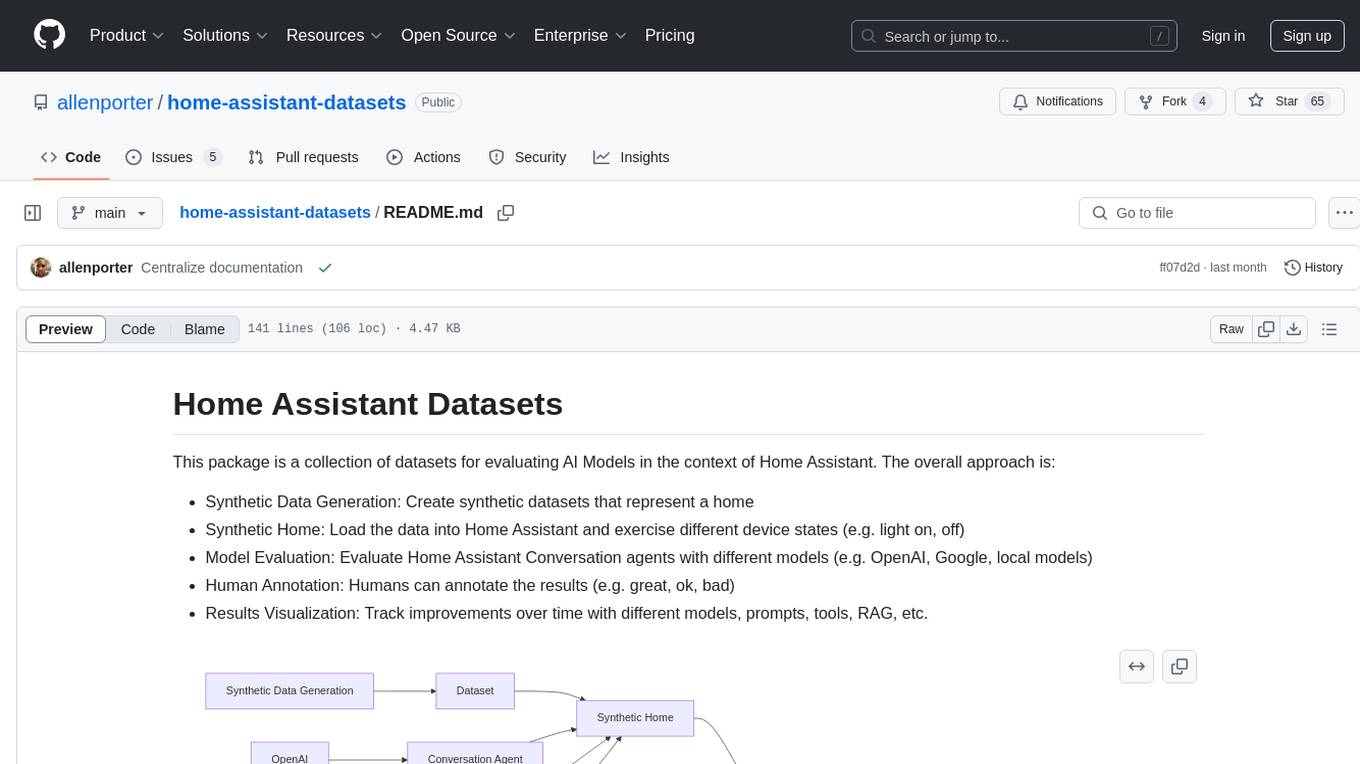
home-assistant-datasets
This package provides a collection of datasets for evaluating AI Models in the context of Home Assistant. It includes synthetic data generation, loading data into Home Assistant, model evaluation with different conversation agents, human annotation of results, and visualization of improvements over time. The datasets cover home descriptions, area descriptions, device descriptions, and summaries that can be performed on a home. The tool aims to build datasets for future training purposes.
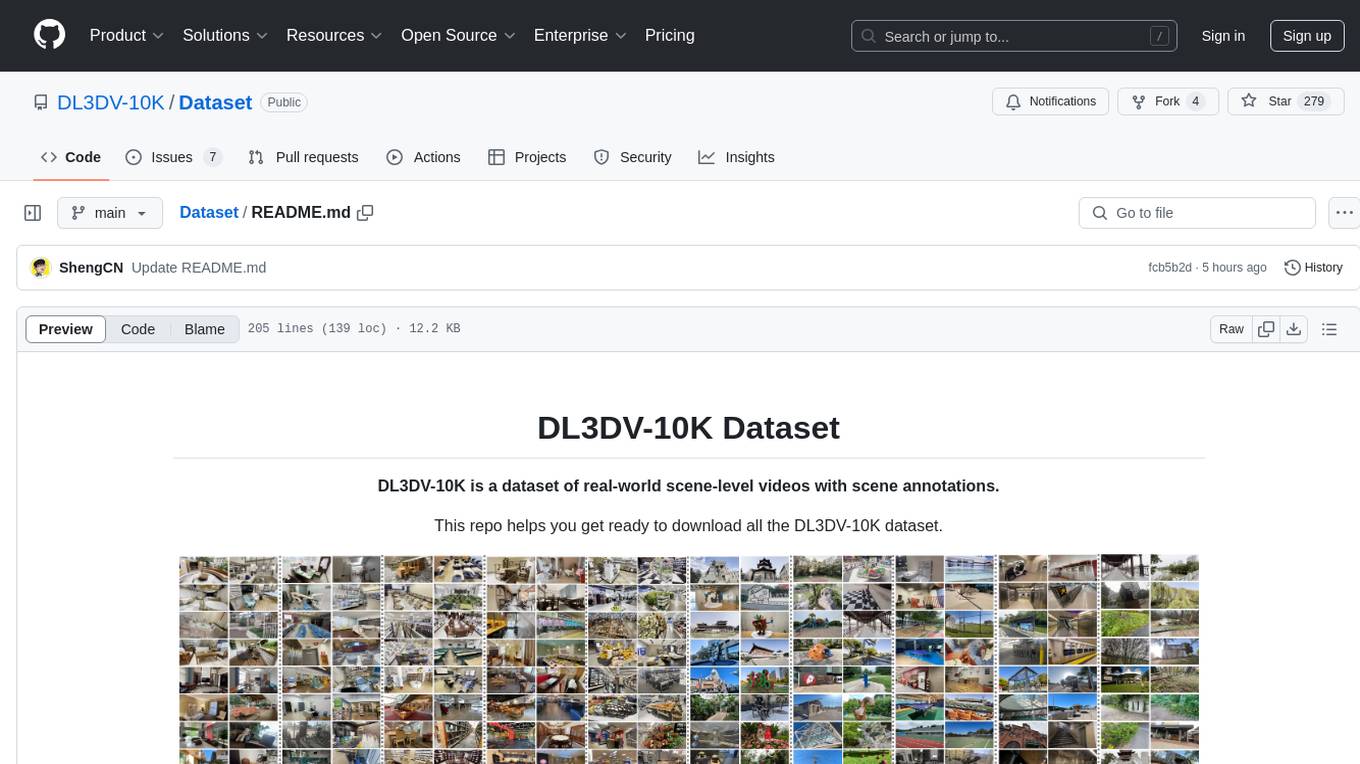
Dataset
DL3DV-10K is a large-scale dataset of real-world scene-level videos with annotations, covering diverse scenes with different levels of reflection, transparency, and lighting. It includes 10,510 multi-view scenes with 51.2 million frames at 4k resolution, and offers benchmark videos for novel view synthesis (NVS) methods. The dataset is designed to facilitate research in deep learning-based 3D vision and provides valuable insights for future research in NVS and 3D representation learning.
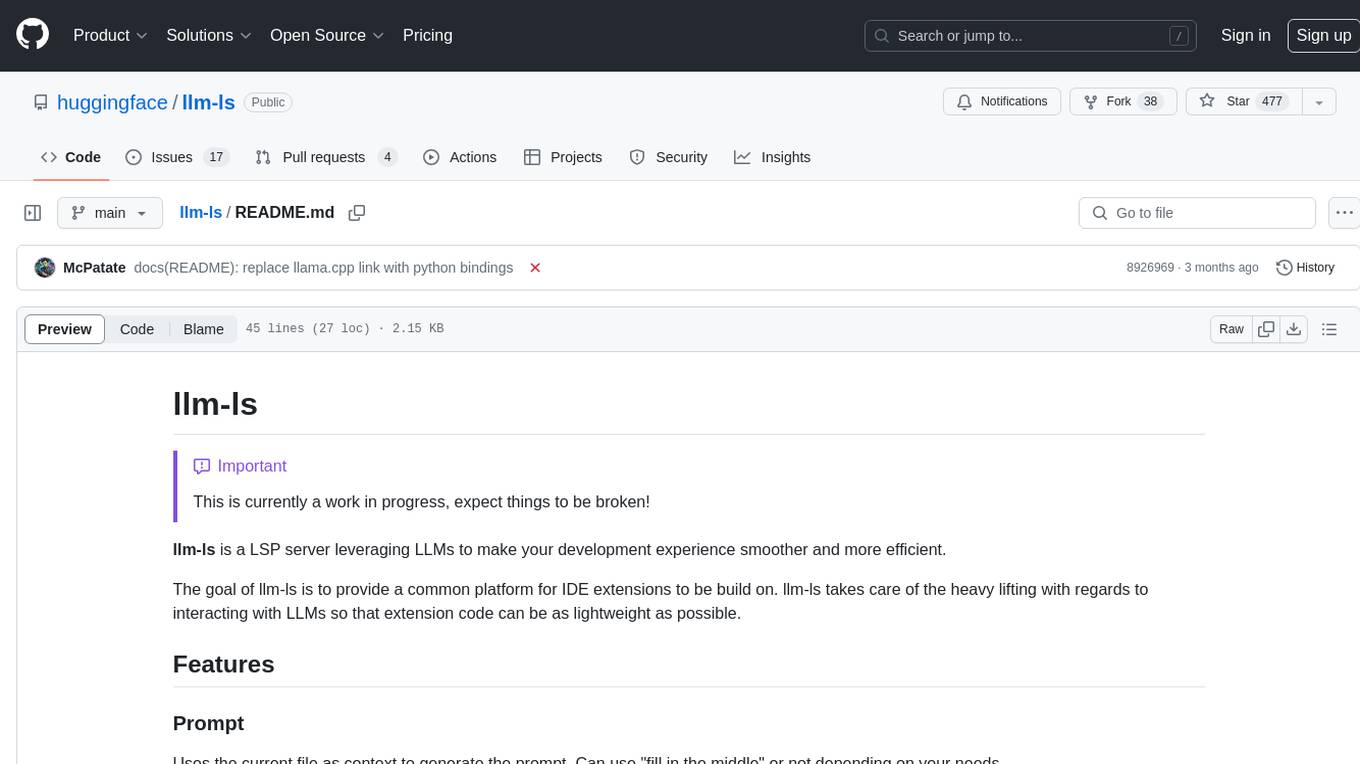
llm-ls
llm-ls is a Language Server Protocol (LSP) server that utilizes Large Language Models (LLMs) to enhance the development experience. It aims to serve as a foundation for IDE extensions by simplifying interactions with LLMs, enabling lightweight extension code. The server offers features such as context-based prompt generation, telemetry for retraining, code completion based on AST analysis, and compatibility with various backends like Hugging Face's APIs and llama.cpp server bindings.
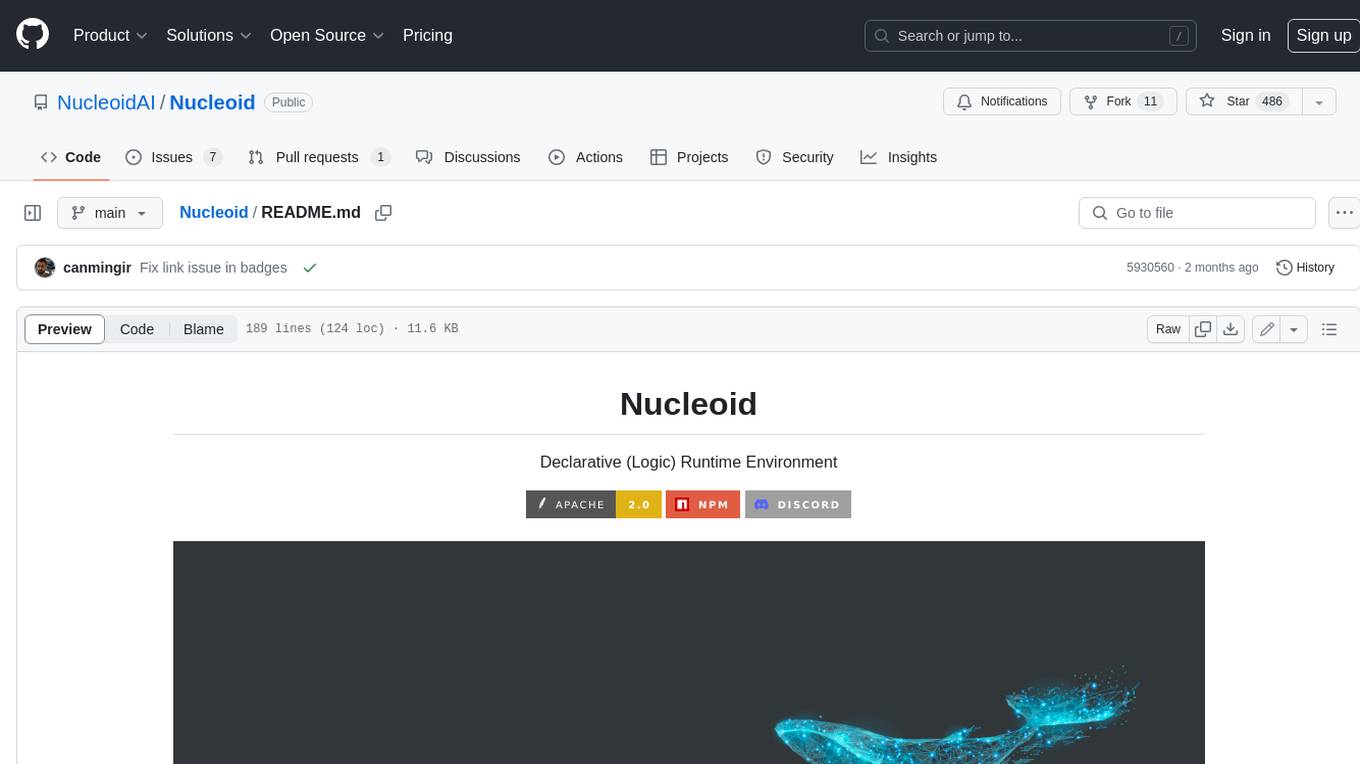
Nucleoid
Nucleoid is a declarative (logic) runtime environment that manages both data and logic under the same runtime. It uses a declarative programming paradigm, which allows developers to focus on the business logic of the application, while the runtime manages the technical details. This allows for faster development and reduces the amount of code that needs to be written. Additionally, the sharding feature can help to distribute the load across multiple instances, which can further improve the performance of the system.
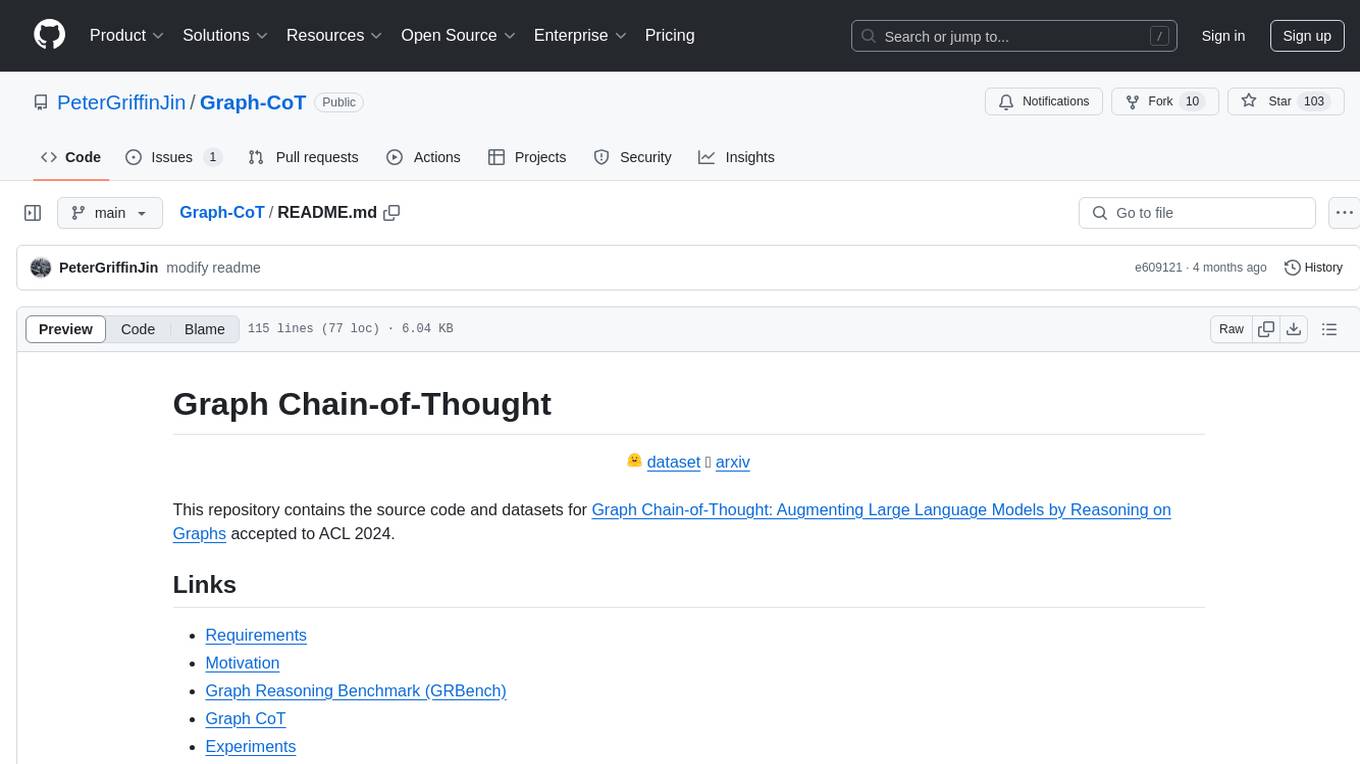
Graph-CoT
This repository contains the source code and datasets for Graph Chain-of-Thought: Augmenting Large Language Models by Reasoning on Graphs accepted to ACL 2024. It proposes a framework called Graph Chain-of-thought (Graph-CoT) to enable Language Models to traverse graphs step-by-step for reasoning, interaction, and execution. The motivation is to alleviate hallucination issues in Language Models by augmenting them with structured knowledge sources represented as graphs.
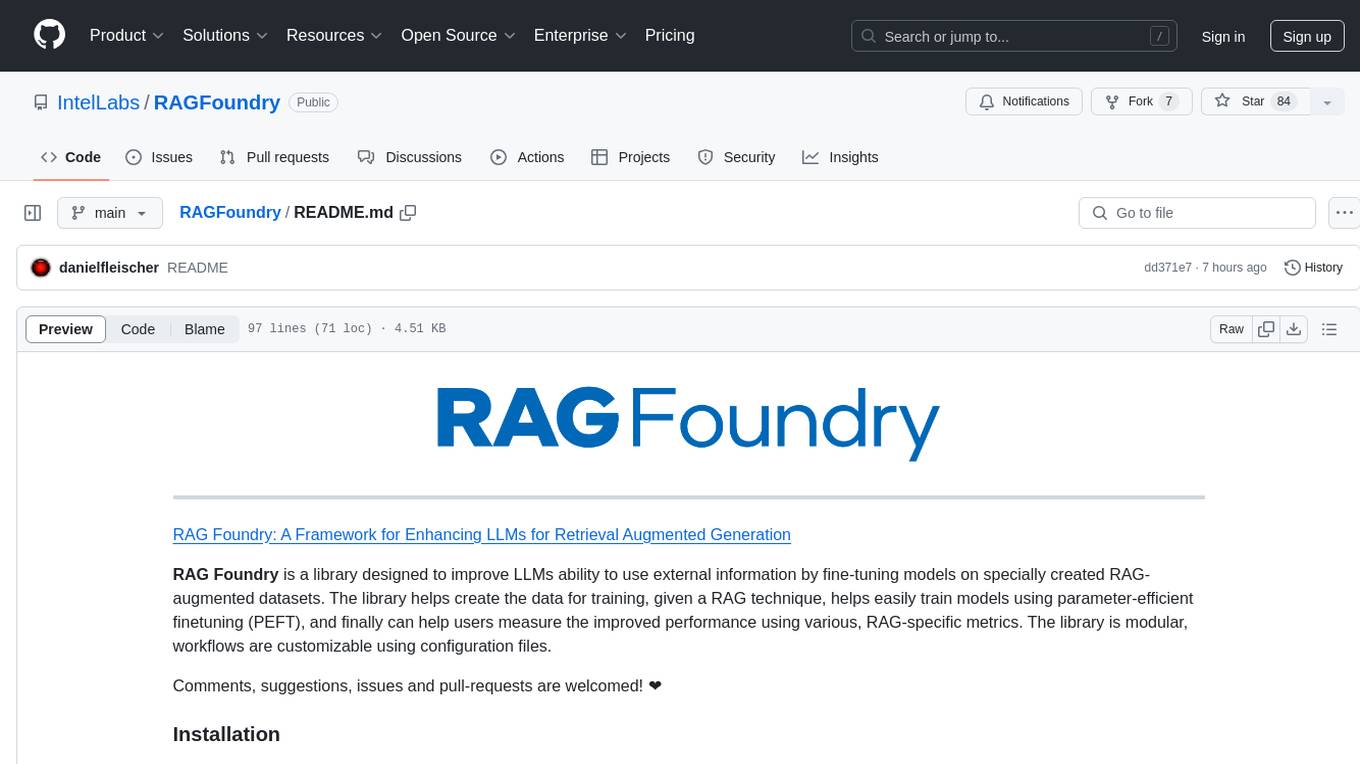
RAGFoundry
RAG Foundry is a library designed to enhance Large Language Models (LLMs) by fine-tuning models on RAG-augmented datasets. It helps create training data, train models using parameter-efficient finetuning (PEFT), and measure performance using RAG-specific metrics. The library is modular, customizable using configuration files, and facilitates prototyping with various RAG settings and configurations for tasks like data processing, retrieval, training, inference, and evaluation.
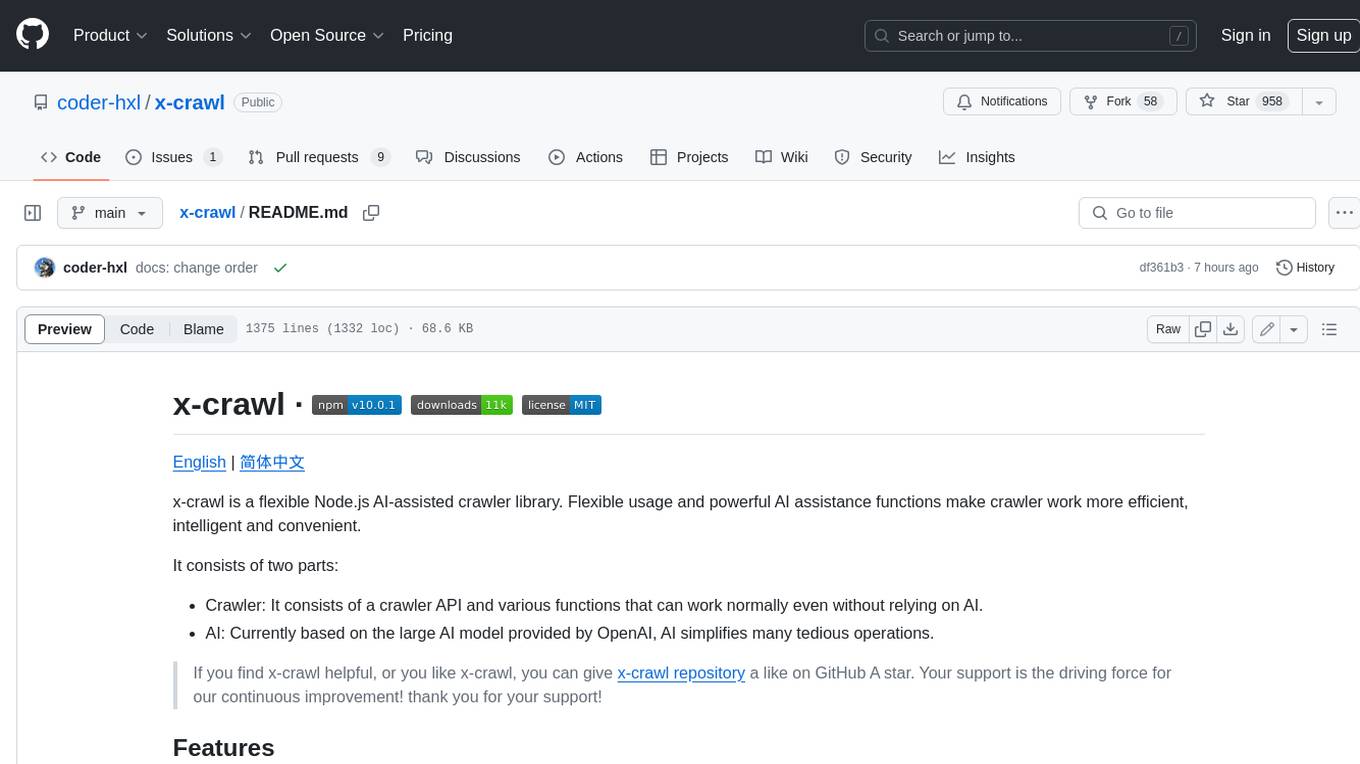
x-crawl
x-crawl is a flexible Node.js AI-assisted crawler library that offers powerful AI assistance functions to make crawler work more efficient, intelligent, and convenient. It consists of a crawler API and various functions that can work normally even without relying on AI. The AI component is currently based on a large AI model provided by OpenAI, simplifying many tedious operations. The library supports crawling dynamic pages, static pages, interface data, and file data, with features like control page operations, device fingerprinting, asynchronous sync, interval crawling, failed retry handling, rotation proxy, priority queue, crawl information control, and TypeScript support.
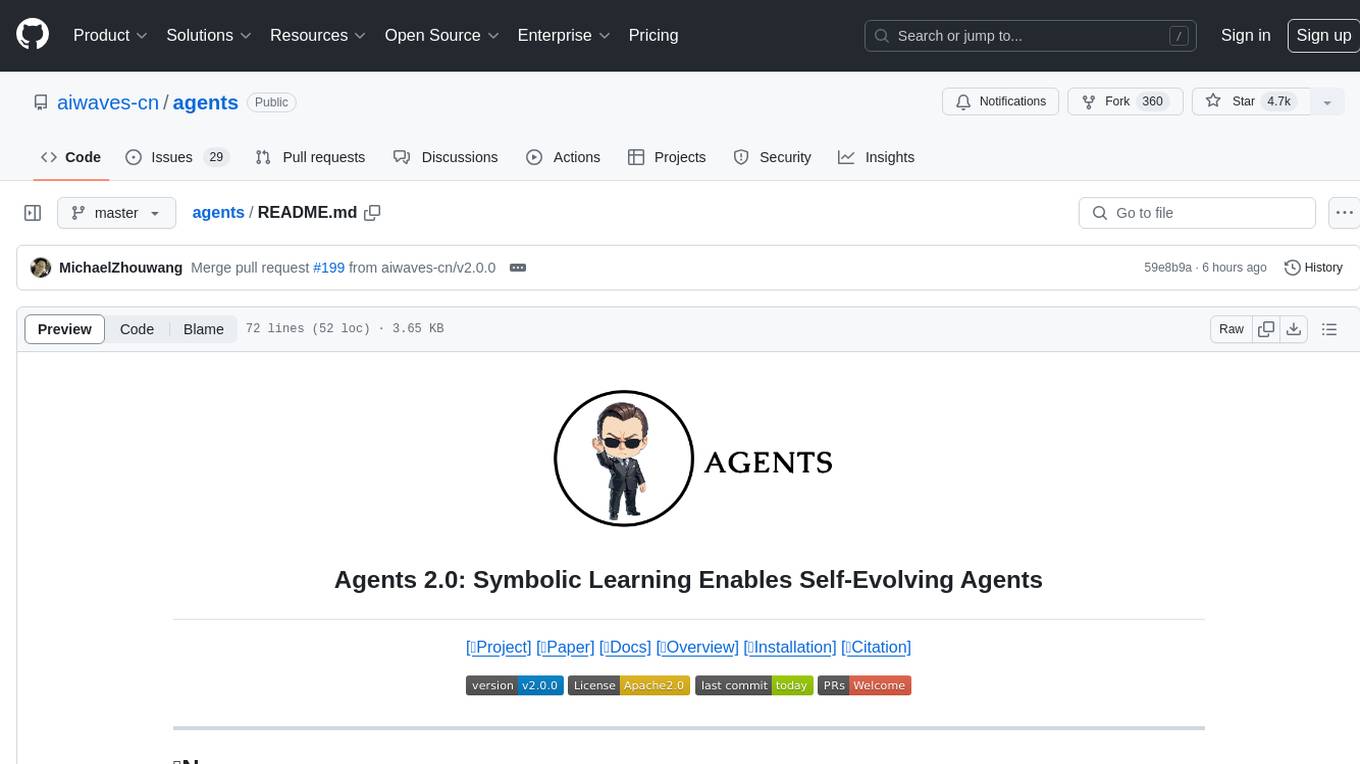
agents
Agents 2.0 is a framework for training language agents using symbolic learning, inspired by connectionist learning for neural nets. It implements main components of connectionist learning like back-propagation and gradient-based weight update in the context of agent training using language-based loss, gradients, and weights. The framework supports optimizing multi-agent systems and allows multiple agents to take actions in one node.
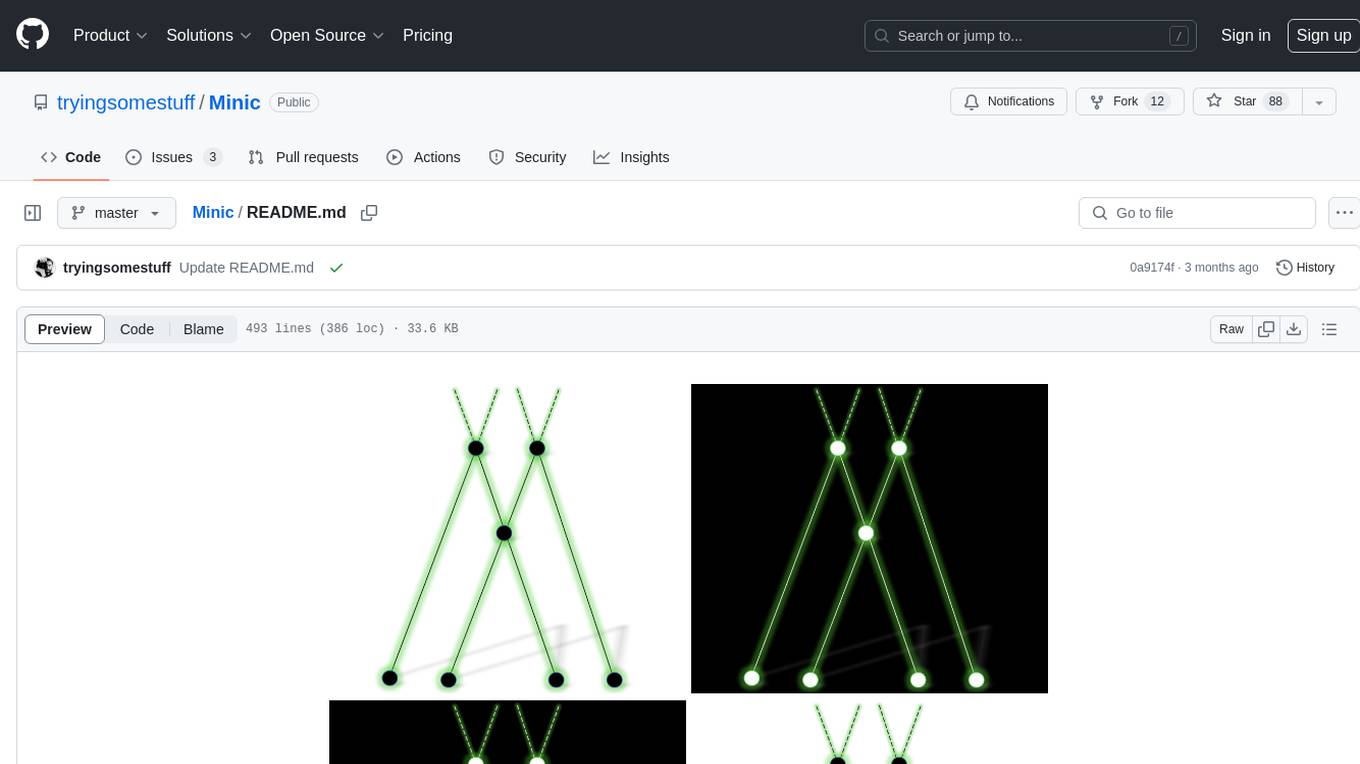
Minic
Minic is a chess engine developed for learning about chess programming and modern C++. It is compatible with CECP and UCI protocols, making it usable in various software. Minic has evolved from a one-file code to a more classic C++ style, incorporating features like evaluation tuning, perft, tests, and more. It has integrated NNUE frameworks from Stockfish and Seer implementations to enhance its strength. Minic is currently ranked among the top engines with an Elo rating around 3400 at CCRL scale.
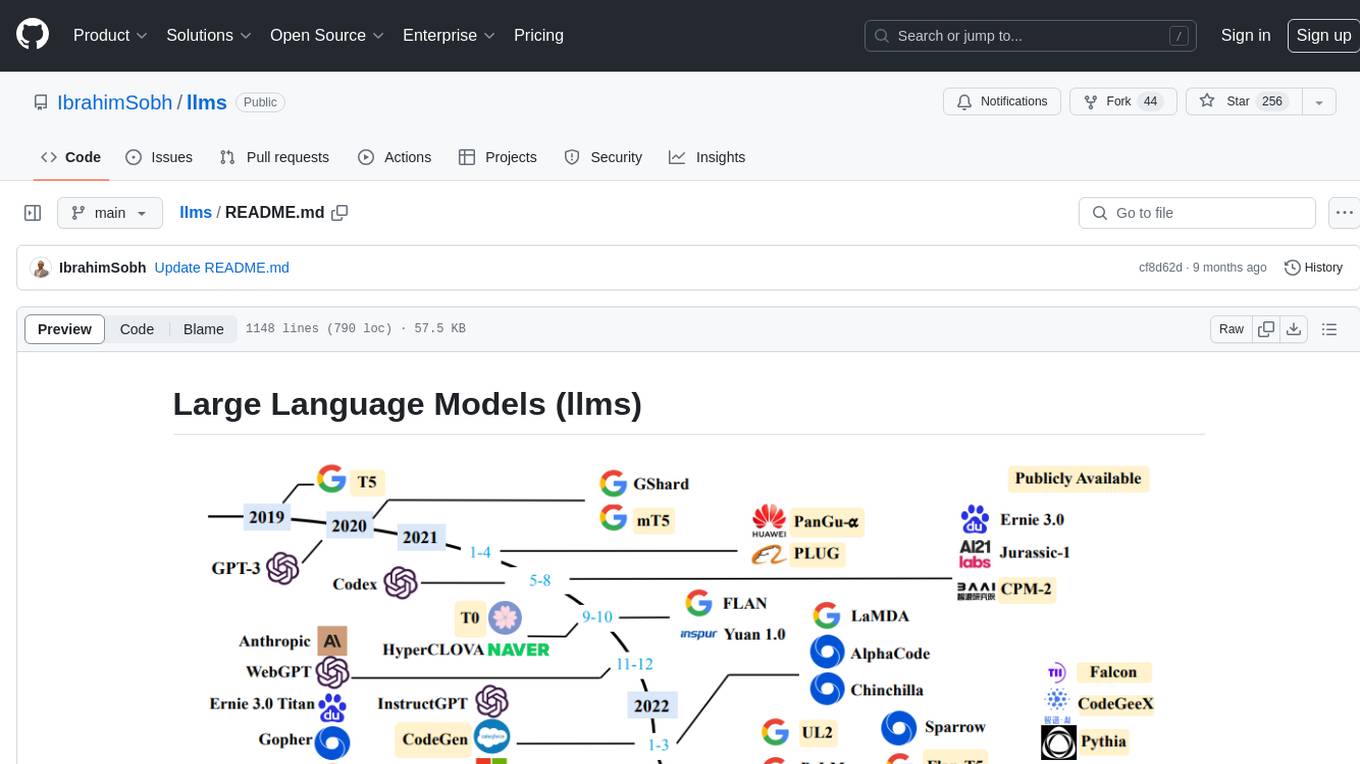
llms
The 'llms' repository is a comprehensive guide on Large Language Models (LLMs), covering topics such as language modeling, applications of LLMs, statistical language modeling, neural language models, conditional language models, evaluation methods, transformer-based language models, practical LLMs like GPT and BERT, prompt engineering, fine-tuning LLMs, retrieval augmented generation, AI agents, and LLMs for computer vision. The repository provides detailed explanations, examples, and tools for working with LLMs.
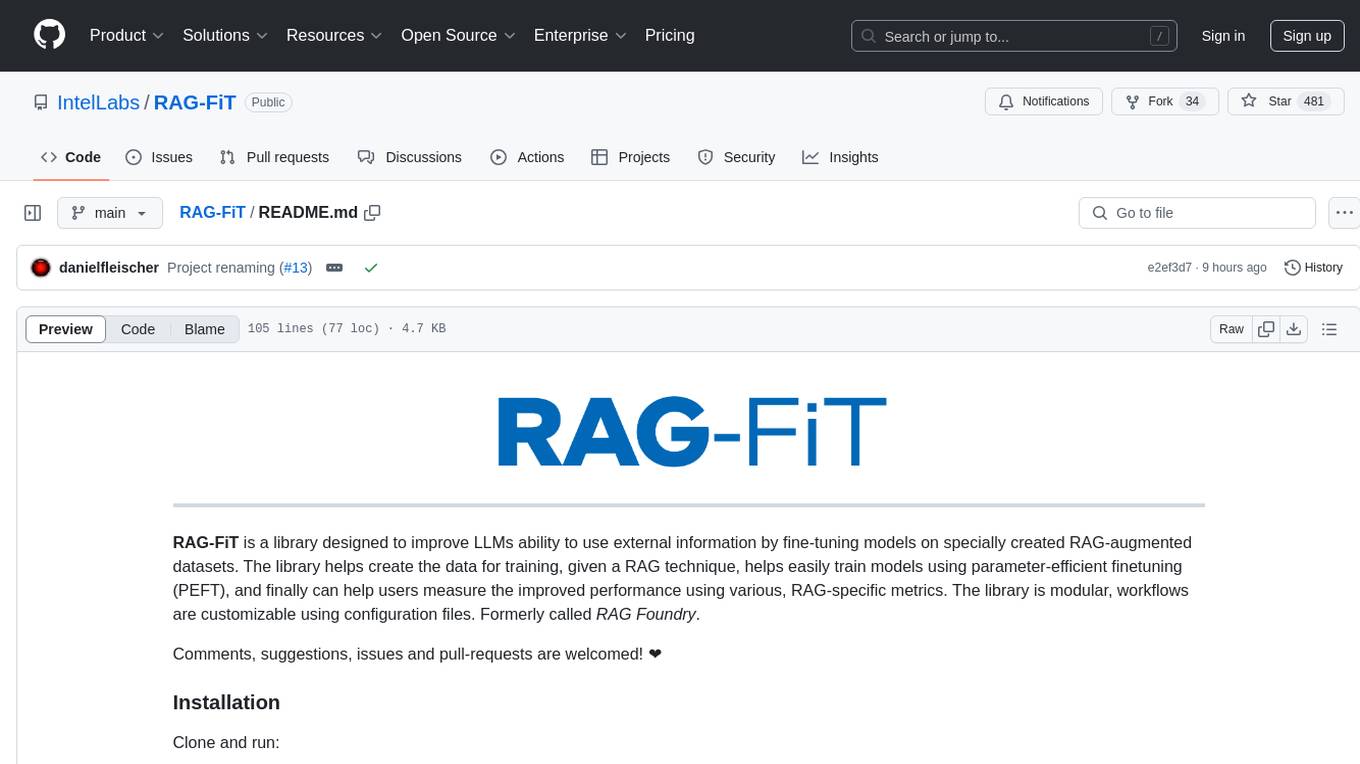
RAG-FiT
RAG-FiT is a library designed to improve Language Models' ability to use external information by fine-tuning models on specially created RAG-augmented datasets. The library assists in creating training data, training models using parameter-efficient finetuning (PEFT), and evaluating performance using RAG-specific metrics. It is modular, customizable via configuration files, and facilitates fast prototyping and experimentation with various RAG settings and configurations.
For similar tasks

gguf-tools
GGUF tools is a library designed to manipulate GGUF files commonly used in machine learning projects. The main goal of this library is to provide accessible code that documents GGUF files for the llama.cpp project. The utility implements subcommands to show detailed info about GGUF files, compare two LLMs, inspect tensor weights, and extract models from Mixtral 7B MoE. The library is under active development with well-commented code and a simple API. However, it has limitations in handling quantization formats.

PyRIT
PyRIT is an open access automation framework designed to empower security professionals and ML engineers to red team foundation models and their applications. It automates AI Red Teaming tasks to allow operators to focus on more complicated and time-consuming tasks and can also identify security harms such as misuse (e.g., malware generation, jailbreaking), and privacy harms (e.g., identity theft). The goal is to allow researchers to have a baseline of how well their model and entire inference pipeline is doing against different harm categories and to be able to compare that baseline to future iterations of their model. This allows them to have empirical data on how well their model is doing today, and detect any degradation of performance based on future improvements.
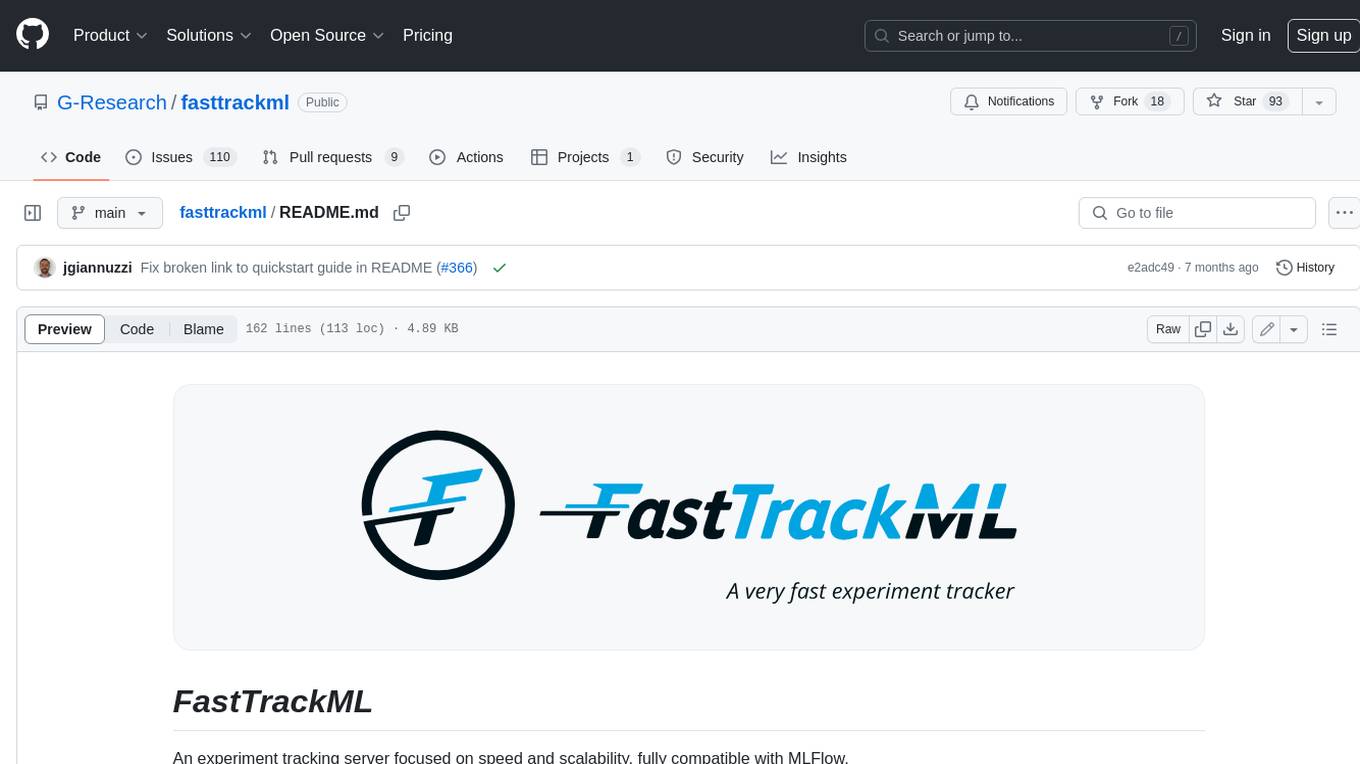
fasttrackml
FastTrackML is an experiment tracking server focused on speed and scalability, fully compatible with MLFlow. It provides a user-friendly interface to track and visualize your machine learning experiments, making it easy to compare different models and identify the best performing ones. FastTrackML is open source and can be easily installed and run with pip or Docker. It is also compatible with the MLFlow Python package, making it easy to integrate with your existing MLFlow workflows.
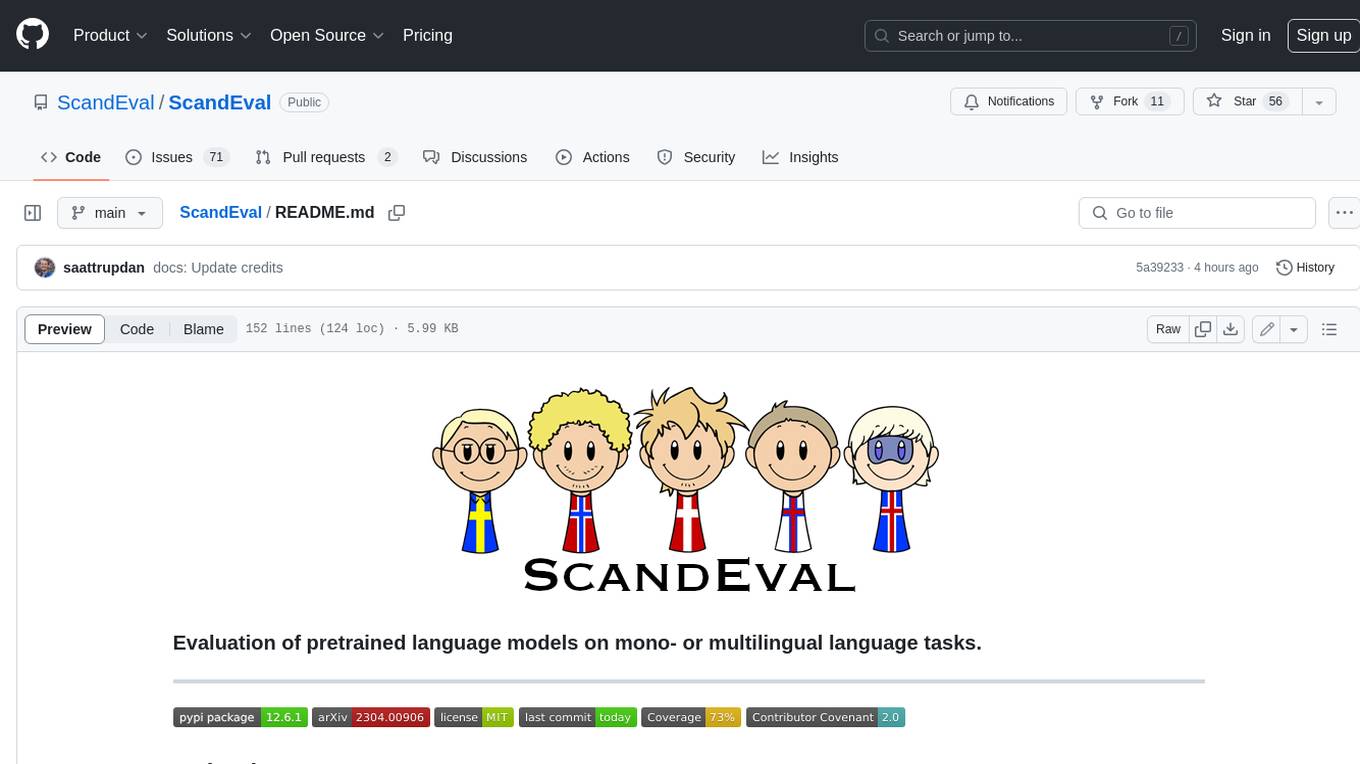
ScandEval
ScandEval is a framework for evaluating pretrained language models on mono- or multilingual language tasks. It provides a unified interface for benchmarking models on a variety of tasks, including sentiment analysis, question answering, and machine translation. ScandEval is designed to be easy to use and extensible, making it a valuable tool for researchers and practitioners alike.
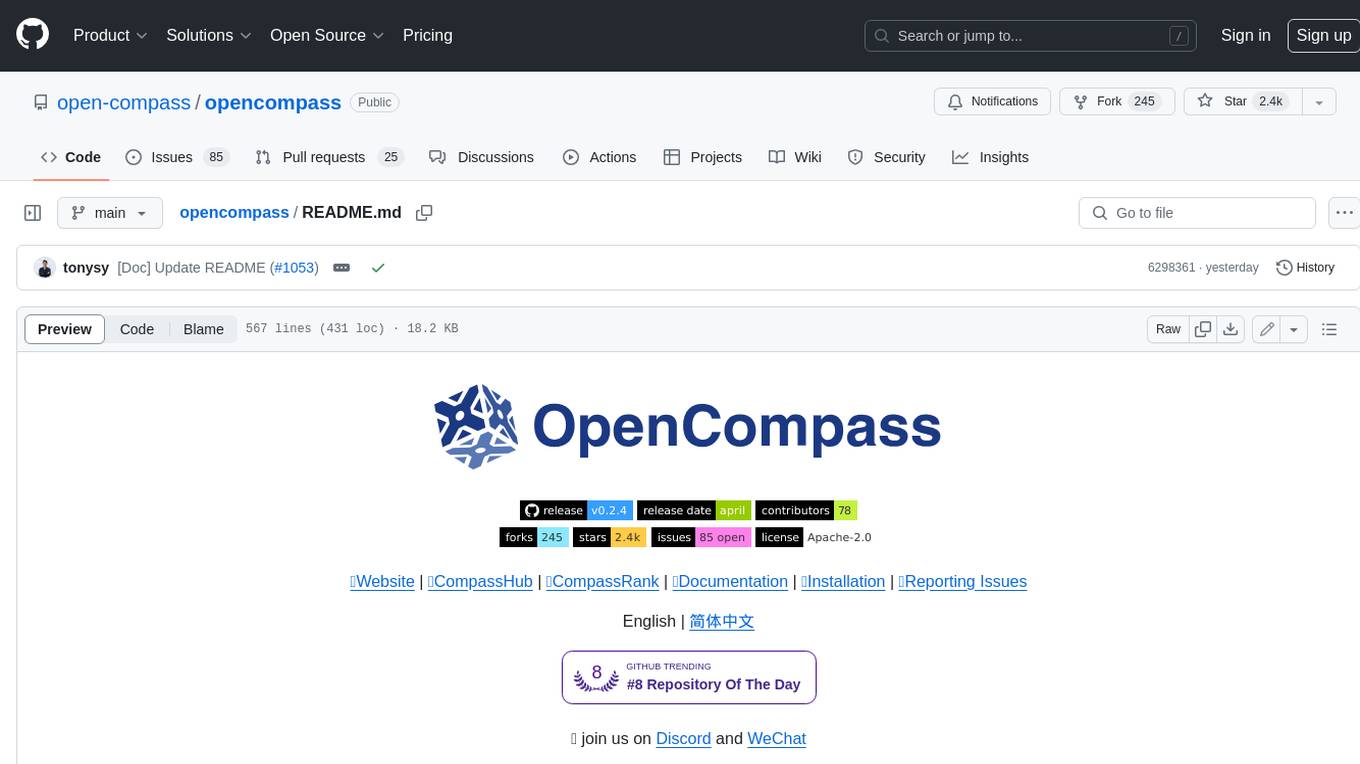
opencompass
OpenCompass is a one-stop platform for large model evaluation, aiming to provide a fair, open, and reproducible benchmark for large model evaluation. Its main features include: * Comprehensive support for models and datasets: Pre-support for 20+ HuggingFace and API models, a model evaluation scheme of 70+ datasets with about 400,000 questions, comprehensively evaluating the capabilities of the models in five dimensions. * Efficient distributed evaluation: One line command to implement task division and distributed evaluation, completing the full evaluation of billion-scale models in just a few hours. * Diversified evaluation paradigms: Support for zero-shot, few-shot, and chain-of-thought evaluations, combined with standard or dialogue-type prompt templates, to easily stimulate the maximum performance of various models. * Modular design with high extensibility: Want to add new models or datasets, customize an advanced task division strategy, or even support a new cluster management system? Everything about OpenCompass can be easily expanded! * Experiment management and reporting mechanism: Use config files to fully record each experiment, and support real-time reporting of results.
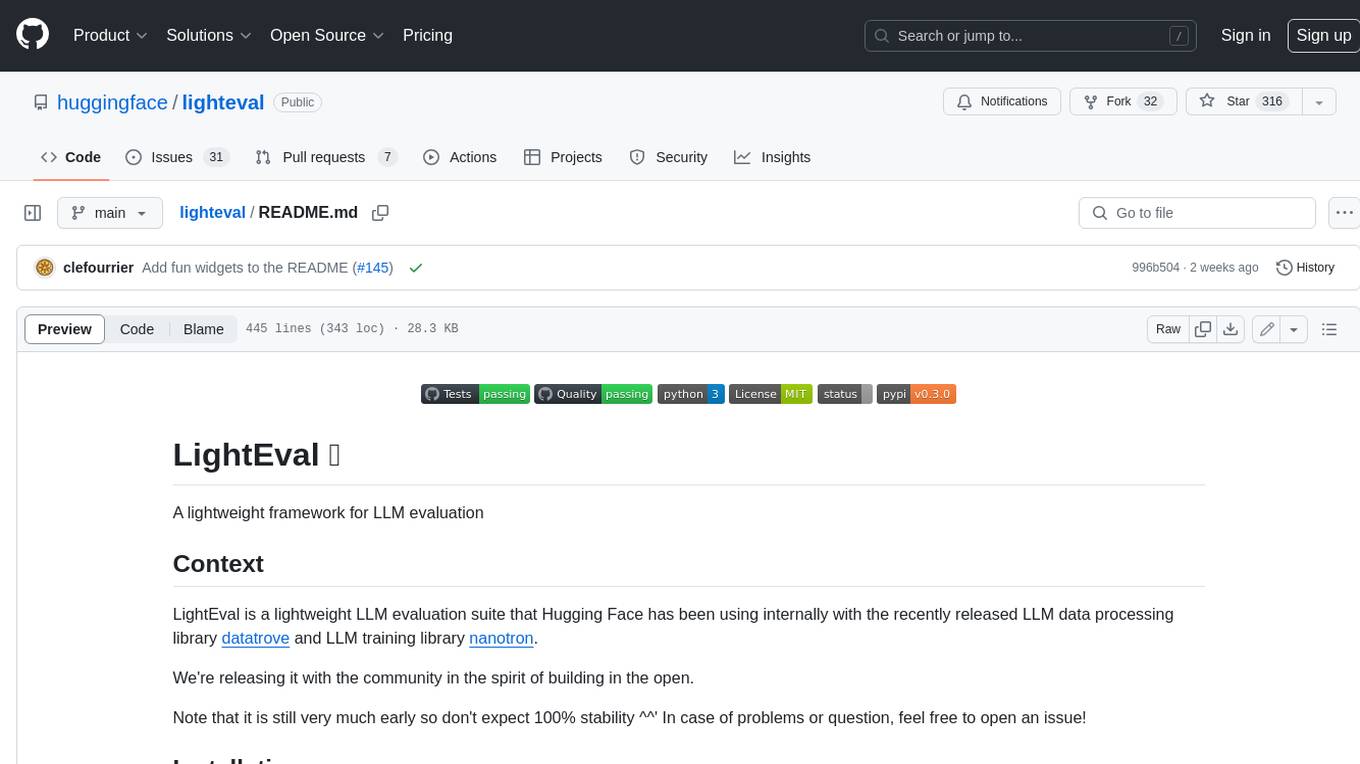
lighteval
LightEval is a lightweight LLM evaluation suite that Hugging Face has been using internally with the recently released LLM data processing library datatrove and LLM training library nanotron. We're releasing it with the community in the spirit of building in the open. Note that it is still very much early so don't expect 100% stability ^^' In case of problems or question, feel free to open an issue!
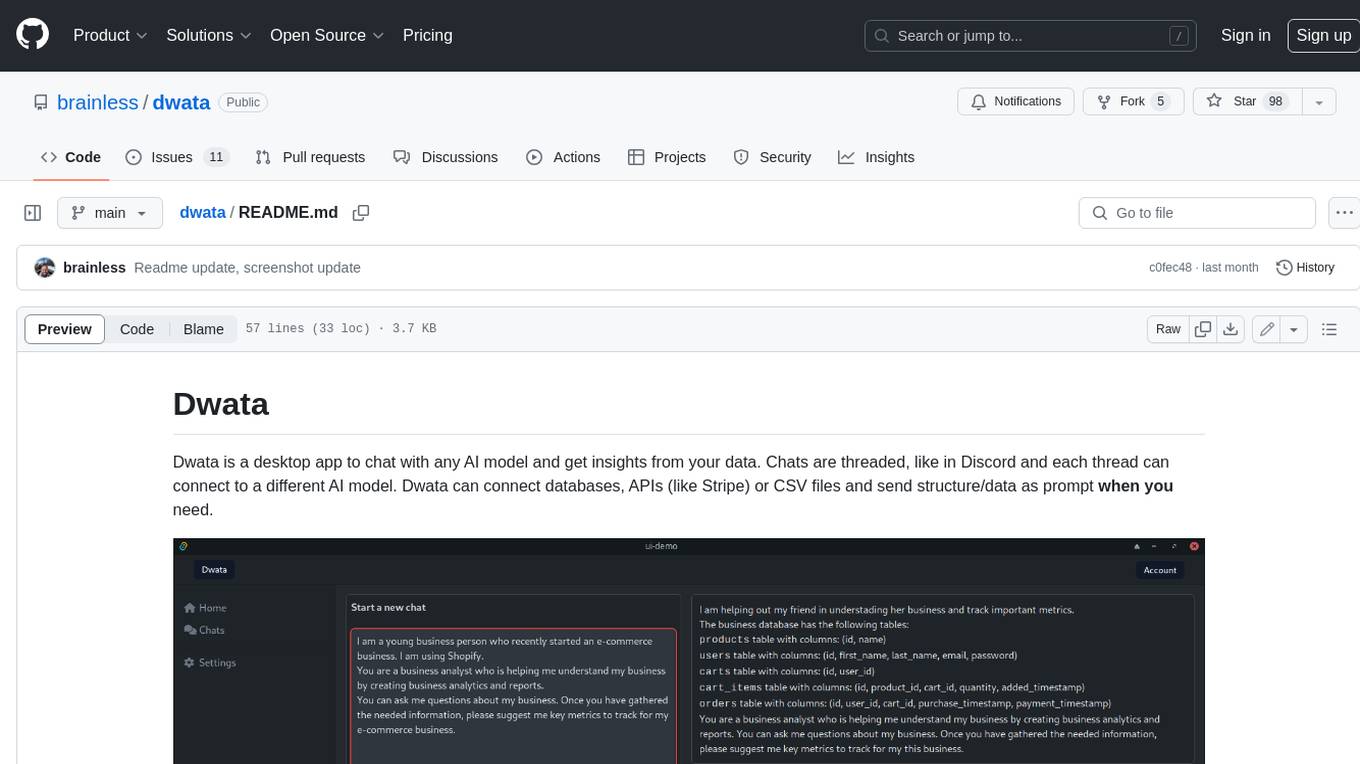
dwata
Dwata is a desktop application that allows users to chat with any AI model and gain insights from their data. Chats are organized into threads, similar to Discord, with each thread connecting to a different AI model. Dwata can connect to databases, APIs (such as Stripe), or CSV files and send structured data as prompts when needed. The AI's response will often include SQL or Python code, which can be used to extract the desired insights. Dwata can validate AI-generated SQL to ensure that the tables and columns referenced are correct and can execute queries against the database from within the application. Python code (typically using Pandas) can also be executed from within Dwata, although this feature is still in development. Dwata supports a range of AI models, including OpenAI's GPT-4, GPT-4 Turbo, and GPT-3.5 Turbo; Groq's LLaMA2-70b and Mixtral-8x7b; Phind's Phind-34B and Phind-70B; Anthropic's Claude; and Ollama's Llama 2, Mistral, and Phi-2 Gemma. Dwata can compare chats from different models, allowing users to see the responses of multiple models to the same prompts. Dwata can connect to various data sources, including databases (PostgreSQL, MySQL, MongoDB), SaaS products (Stripe, Shopify), CSV files/folders, and email (IMAP). The desktop application does not collect any private or business data without the user's explicit consent.
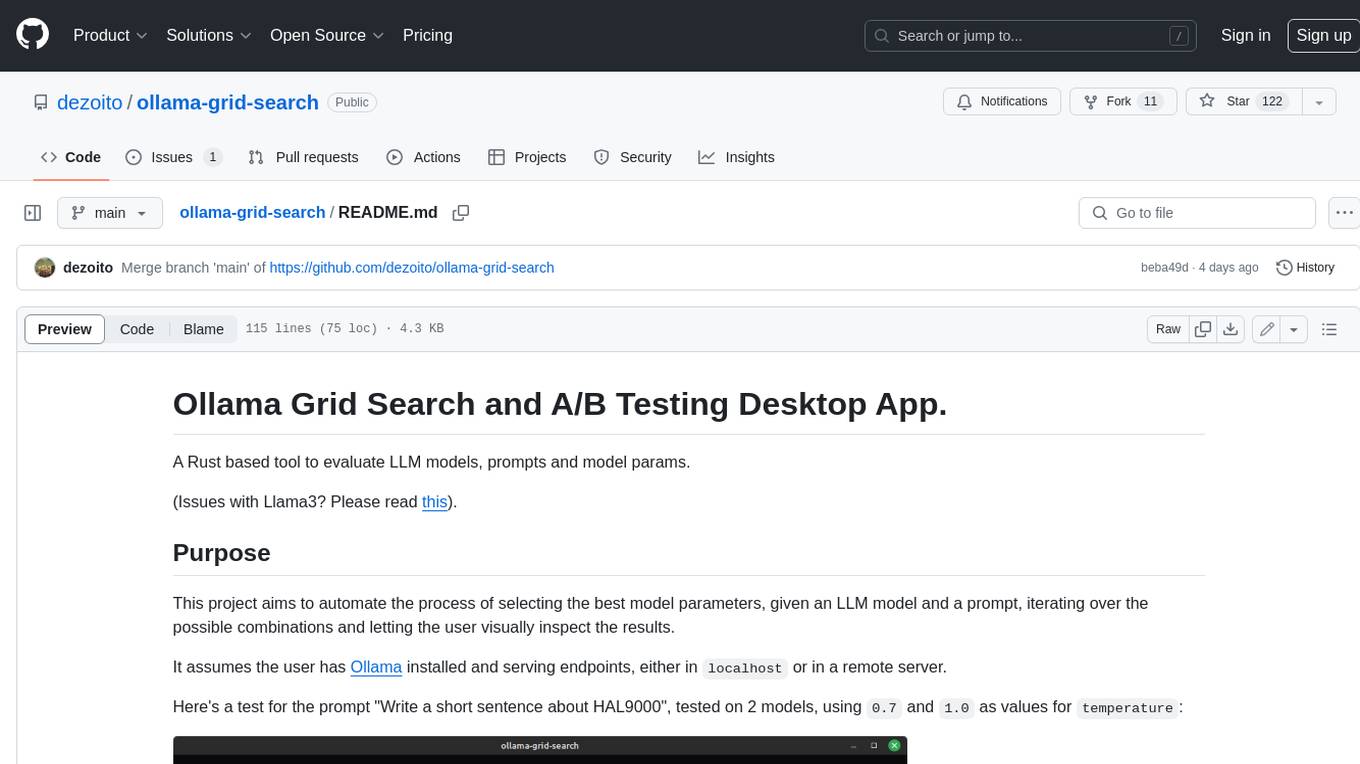
ollama-grid-search
A Rust based tool to evaluate LLM models, prompts and model params. It automates the process of selecting the best model parameters, given an LLM model and a prompt, iterating over the possible combinations and letting the user visually inspect the results. The tool assumes the user has Ollama installed and serving endpoints, either in `localhost` or in a remote server. Key features include: * Automatically fetches models from local or remote Ollama servers * Iterates over different models and params to generate inferences * A/B test prompts on different models simultaneously * Allows multiple iterations for each combination of parameters * Makes synchronous inference calls to avoid spamming servers * Optionally outputs inference parameters and response metadata (inference time, tokens and tokens/s) * Refetching of individual inference calls * Model selection can be filtered by name * List experiments which can be downloaded in JSON format * Configurable inference timeout * Custom default parameters and system prompts can be defined in settings
For similar jobs

weave
Weave is a toolkit for developing Generative AI applications, built by Weights & Biases. With Weave, you can log and debug language model inputs, outputs, and traces; build rigorous, apples-to-apples evaluations for language model use cases; and organize all the information generated across the LLM workflow, from experimentation to evaluations to production. Weave aims to bring rigor, best-practices, and composability to the inherently experimental process of developing Generative AI software, without introducing cognitive overhead.

LLMStack
LLMStack is a no-code platform for building generative AI agents, workflows, and chatbots. It allows users to connect their own data, internal tools, and GPT-powered models without any coding experience. LLMStack can be deployed to the cloud or on-premise and can be accessed via HTTP API or triggered from Slack or Discord.

VisionCraft
The VisionCraft API is a free API for using over 100 different AI models. From images to sound.

kaito
Kaito is an operator that automates the AI/ML inference model deployment in a Kubernetes cluster. It manages large model files using container images, avoids tuning deployment parameters to fit GPU hardware by providing preset configurations, auto-provisions GPU nodes based on model requirements, and hosts large model images in the public Microsoft Container Registry (MCR) if the license allows. Using Kaito, the workflow of onboarding large AI inference models in Kubernetes is largely simplified.

PyRIT
PyRIT is an open access automation framework designed to empower security professionals and ML engineers to red team foundation models and their applications. It automates AI Red Teaming tasks to allow operators to focus on more complicated and time-consuming tasks and can also identify security harms such as misuse (e.g., malware generation, jailbreaking), and privacy harms (e.g., identity theft). The goal is to allow researchers to have a baseline of how well their model and entire inference pipeline is doing against different harm categories and to be able to compare that baseline to future iterations of their model. This allows them to have empirical data on how well their model is doing today, and detect any degradation of performance based on future improvements.

tabby
Tabby is a self-hosted AI coding assistant, offering an open-source and on-premises alternative to GitHub Copilot. It boasts several key features: * Self-contained, with no need for a DBMS or cloud service. * OpenAPI interface, easy to integrate with existing infrastructure (e.g Cloud IDE). * Supports consumer-grade GPUs.

spear
SPEAR (Simulator for Photorealistic Embodied AI Research) is a powerful tool for training embodied agents. It features 300 unique virtual indoor environments with 2,566 unique rooms and 17,234 unique objects that can be manipulated individually. Each environment is designed by a professional artist and features detailed geometry, photorealistic materials, and a unique floor plan and object layout. SPEAR is implemented as Unreal Engine assets and provides an OpenAI Gym interface for interacting with the environments via Python.

Magick
Magick is a groundbreaking visual AIDE (Artificial Intelligence Development Environment) for no-code data pipelines and multimodal agents. Magick can connect to other services and comes with nodes and templates well-suited for intelligent agents, chatbots, complex reasoning systems and realistic characters.
